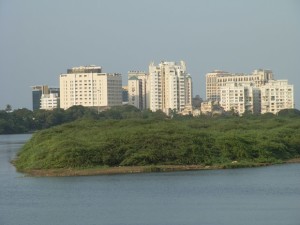Real Estate Trends 2015
The years 2014-15 can be termed as epic milestones for the real estate industry in India. There have been some landmark decisions that aim to change the face of the realty industry and create a conducive and more just form of housing options catering to each and every section of the society.
An overview of the real estate industry in India
If you think about the real estate industry on a macro level, you’ll appreciate how important this industry really is. To illustrate, let’s understand that housing is considered to be the second largest industry generating a lot of employment opportunities employing an estimated 35 million people. There are more than three hundred interlinked industries such as steel, cement, brick and transport among others that are supported on the backing of a robust real estate industry. What’s more, the real estate industry is a significant contributor to India’s GDP and does feature as an attractive foreign direct investment (FDI) opportunity.
The Planning Commission estimates that by 2030, about 600 million people will be living in cities, which means that reasonably priced housing will be the need of the hour. The real estate industry does indeed have a large gap to achieve if you consider these proportions.
Why invest in real estate?
The good thing about investing in real estate is that it holds the promise of huge earning potentials- It can be rented or leased out, can be resold or kept as a nest egg for a rainy day. Whichever way you look at it, real estate seems to be one of the most lucrative investment options. There are many tax benefits that make it even more appealing, especially in the case of working couples, applying for a joint home loan means eligibility for a higher loan amount and tax savings as well.
What’s new?
The GOI has allocated US$ 1.3 billion for Rural Housing Fund in the Union Budget 2014-15. It has also allocated US$ 0.7 billion for National Housing Bank (NHB) to increase the flow of cheaper credit for affordable housing for urban poor. Besides which some of the other key features that have taken place in the recent past can be listed as under
- Lowering of interest rates by banks
- RBI offering incentives for infrastructure financing
- Creation of real estate investment trusts (Reits).
There have also been a slew of good governance policies such as relaxation of FDI norms in the construction sector and reduction of excise on cement and steel among other factors; all of which have succeeded in giving an impetus to the real estate sector. It is estimated that India’s collective real estate worth is nearly $12 billion. Moreover, it is growing at a 30 percent annual growth rate and it is expected that there will be many more good tidings for this sector in future.
Here are some a few points that are being considered as monumental milestones in the realty industry this year
The Southern Winds of Change
There is a need for affordable housing projects in India and it does seem like the urban cities are facing a sort of saturation. Peripheral areas and fringe towns in South India are being developed and are being considered as the new avenues for filling the gap of affordable residential housing. In fact, there are many large land parcels that are available for the taking in South India.
In Karnataka one can find likely areas such as Devanahalli, Mysore, Hoskote and in Chennai OMR, GST road, Shollinganallur, Perungalathur and Sembakkam among other areas which have been in the limelight with massive projects comprising of over a thousand units.
This growth mode is not limited to the south only, however one can say that the prospects in South India are definitely bigger, better and brighter. Similar projects in Faridabad and some other areas can be found in North India too.
Impetus to Industrial corridors
The proposed industrial corridors and the ones that are already in the development phases hold the golden promise of creating a goldmine of a million economic and investment opportunities. It is already a well-known fact that not only do industrial corridors boost infrastructure growth in areas that are away from main city centres but they also provide a conducive environment for developing new industrial cities as ‘Smart Cities’ with proper dedicated allocation for planned urbanisation.
Such projects help in expanding the city’s manufacturing and services sectors, besides positively boosting associated infrastructure such as new company set-ups, joint ventures, foreign direct investment (FDI) opportunities, assurance of dedicated water supply and high capacity transportation and logistics facilities. The industrial corridors have been a boon for the local employment opportunities created as an outcome.
Cities that have been marked for development under the industrial corridors are expected to see a massive transformation from being mere bystanders to epicenters for industrial activity.
Coupled along with the GOI’s (Government of India) ambitious budgetary allocations for affordable housing and a revised tax incentive and loan structure there is an air of optimism and anticipation for the resurgence of the real estate sector in India.



